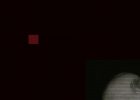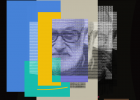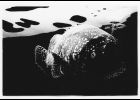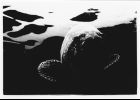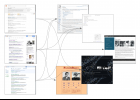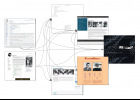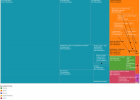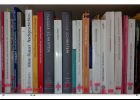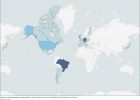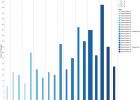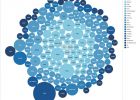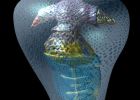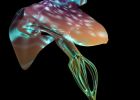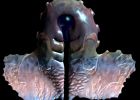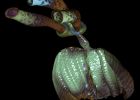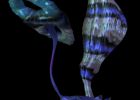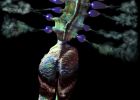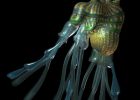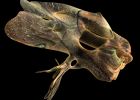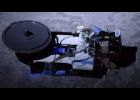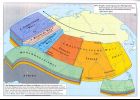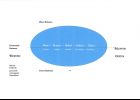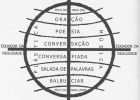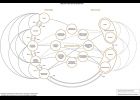Flusser Studies 20 – December 2015 / Special Tenth Anniversary Issue
Part I: Thinking with Vilém Flusser
Le style c’est l’homme même: Für ein fluides grenzüberschreitendes Denken
Vilém Flusser als Werkzeugkasten – quer- und weitergedacht
Über Zufall und Notwendigkeit der Flusserforschung. Eine Vignette aus gegebenem Anlaß
Briefwechsel Flusser - Braunschweiger 1966 / Brasilien oder die Suche. Kommentar zu Vilém Flusser und Anton Braunschweiger
Inspired by Flusser’s Philosophical Fiction, and the comments “Brazil or the Search” and the “3 Letters from Anton Braunschweiger to Vilém Flusser”, I aim to intensify my personal interests on Flusser’s thinking as well his peculiar view of Brazilian nature and culture. Anton Braunschweiger was a German-Brazilian who worked as a bridge-builder in Amazonia in 1966/67, when he tried to communicate with Flusser about some strange encounters with unknown animals, which he saw firsthand in the forest, or which were described to him by natives. Flusser probably never answered because there is no letter from him in the estate of Braunschweiger who died in 2005 at the age of eighty-seven, lonely and indigent in the city of Manaus in the Amazon region.
Mérou
These black and white pictures of a Merou, also known as Dusky Grouper (Epinephelus marginatus) were taken in August 1990 in the Aquarium Tropical at 293 avenue Daumesnil Paris 12°. In October 1991, Schwamborn met Flusser in the Hotel Königshof near the Stacchus in Munich and they discussed her Merou project. Flusser was fascinated by the fractal analogy of the patterns on the water surface and the skin of the fish captured by the coarse-grained resolution of the photography and wanted to use them for one of his Artforum texts dealing with fractals and self-similarity. However, because of his death in November, this project was not realized.
Techno-imagining Flusser
This article shares some archival gems and treasure maps, as a way of reaching out to all the Flusserphiles in the world. It encourages them not only to disseminate his works, but to do so in actual dialog with his concepts: process him, digest him, play with him and against him. Let’s dare to be footloose.
Part II: Flusser Studies: Ten Years After
Flusser Studies 2005-2015: Five Remarkable Moments
1. Flusser und der Dialog. Negentropische Klimmzüge über der Bodenlosigkeit
Flusser‘s concept of dialog cannot be comprehended from a media theoretical point of view only. A more fruitful approach emerges from within the context of Flusser’s own model of culture that forms an epicycle intended to lend meaning to human life by creating information. This approach also encompasses a consideration of the influence of Judaeo-Christian traditions. We need to understand the changes the concept of dialog has undergone on its way from Martin Buber, for example, to Vilém Flusser.
Life is absurd in the face of its bottomlessness. Therefore, strategies are developed to make it more livable. In celebration and play we tend to forget death as a menace. Most of all, however, human beings try to overcome the futility and loneliness of a life toward death by means of dialog with other human beings. Recognition of the other as a „Thou“ is both the condition of a dialog and its result. Flusser revives and secularizes the concept of relationships of mutual recognition, a motif at the core of Jewish-Christian thought. Buber allows two ways for the „I“ to realize itself, in experiencing the world or, alternatively, in relation to a „Thou“. Flusser, however, insists on the exclusivity of the creation of the „I“ in dialog. Another significant shift of the concept of dialog from Buber to Flusser is that Buber interprets dialogs among humans as merely metaphorical. To him, true meaning is only possible through a dialog with god. Flusser, however, rejects the necessity of a final transcendental rationale. Thus, he secularizes Jewish- Christian tradition: it becomes an immanent task to take over responsibility for other human beings by means of dialog.
Dialogs realize free relationships of recognition and appreciation. Today, we are threatened by discursive massification. Therefore, dialogs need to be technically and socially implemented. Discursive structures and their technical materialization ought to be changed into dialogical channels. Again, Flusser’s utopia proves to be profane: The only chance for survival and viability lies in the collective memory of culture set up by dialogical networks.
2. Devil may care: Flusser’s Journey Into Exile and Beyond Reason
Vilém Flusser’s second book, A história do diabo (“History of the devil”), was published in Brazil in 1965 but has yet to be translated into more widely current languages. The present paper aims to summarize the major arguments contained in that early work, situating them in the cultural and intellectual context of the time. Taking Flusser’s personal history of exile as its point of departure, the paper suggests that the issues raised by the book are prescient of important changes in Western thinking over the past thirty years – in particular, the paradigm shift from the rational certainties of modernity to a more fluid notion of ‘reality’ in post-modernity. Flusser’s pioneering grasp of material appearances as “structures of virtuality”, elaborated through language, is indeed prophetic of things taken for granted in the digital era. For the student of Flusser, this important early work provides an insight into the profound unity underlying the multiple facets of his thought and writings.
3. Vilém Flusser 1920 / 1991
This text tells the story of a long and productive friendship: the first encounters between Flusser and Bec, their ritualized Saturday afternoon conversations, their common interests. It also tells the story of their trip to Prague in 1986. The text ends with a description of Bec’s and Flusser’s most important project – Vampyroteuthis infernalis (1987) – thereby introducing the reader to the following two essays.
4. Mein Atlas / My Atlas / Mon Atlas / Meu Atlas
5. Zoosystematica profundorum – Experimental Studies in Deep Sea Communication
The installation Varia Zoosystematica Profundorum models a specific notion of how deep sea communication between specimens and across species might happen, inspired by the work of zoosystematicien Louis Bec and philosopher Vilém Flusser. The video of the installation featured here, is a documentary of the version of the installation shown at the Singuhr Hörgalerie, Großer Wasserspeicher in Berlin, during the SuperCollider conference in Berlin in 2010.
Part III: New Research Approaches
Por um método flusseriano / For a Flusserian Method
In academic circles, Flusser has been traditionally considered to be a “minor” thinker, an author who lacks scholarly rigor and systematicity. If a text can be understood as a testimony of how thought operates, this article follows and explores in Flusser’s texts, his process of writing-thinking, as a particular method. To this end, three procedures will be invoked to systematize a methodological trinity: a form of affirmative writing that implies a certain economy of words; a paradoxical way of writing that creates, and afterwards dilutes dichotomies; and a textuality that is experiential, that is, an aesthetic of existence. The purpose of this endeavor is to create new methodological procedures inspired by Flusser’s processes of writing-action and thought-movement.
Meta-Švejk
This text is an extract of a planned bilingual Portuguese (O homem sem chão) and German (Ein Leben in der Übersetzung) biography of Vilém and Edith Flusser by Gustavo Bernardo and Rainer Guldin. It deals with Flusser’s Czech origins from the point of view of Franz Kafka’s Die Verwandlung (The Metamorphosis) and Jaroslav Hašek’s The Good Soldier Švejk written between 1921 and 1923.
Saul segundo Flusser
This paper will focus on the first text of Vilém Flusser maintained until today. It is the play Saul, written by the thinker at the age of fifteen or sixteen, in 1935 or 1936. The drama, filled with an anguishing existential atmosphere, was written in Prague, the city dangerously neighboring Germany, where the Nuremberg anti-Semitic Race Laws had just began to come into force. In his first work, the author had already built up a dialectical structure, characteristic of his later texts. His very peculiar dialectics, however, does not generate a synthesis, much to the contrary; it generates another dialectics, which instead of limiting, broadens the reflection. In Saul, darkness is opposed to light, Saul to David, the Bible to the twentieth-century. In Flusser’s play, the elements obtain unconventional meanings: darkness is connected with feminine, with nature, with mythos and reconciliation; in turn light, which represents the Universal God, is related to violence and suffering. Saul is an errant character with flaws, weakness, and is deeply human, while David, with his perfection, is perverse. In the last scene, the biblical poetic world of lamentations and hymns cedes place to the prosaic universe of the twentieth-century. The dry, ironic and scientifically objective style of the dialogues between a physician and a man “in leisure clothes” dominates the stage on which lies Saul’s body. This brief text presents excerpts from the play and contextualizes it in light of Flusser’s later works.
„Ich habe gegen Pathos zu kämpfen gehabt […].“ Zur Entstehung und Bedeutung von Vilém Flussers Das Zwanzigste Jahrhundert. Versuch einer subjektiven Synthese
This essay deals with Vilém Flusser’s first finished, but still unpublished book Das Zwanzigste Jahrhundert, which was most probably written in the mid-1950s. The book consists of six chapters linked to each other in an unfolding spiral: politics, society, science, art, philosophy and religion. Flusser’s main aim is to try to synthesize the West with the East: modern Western science with the Indian philosophy of the Vedanta, the contemporary Western concept of art with that of Chinese culture and the Judaic-Christian belief with Hinduism and Buddhism. This synthesis is possible because the West and the East have been slowly evolving in the same direction. The book is remarkable both from a thematic and a stylistic point of view. It is the very origin, and construction site of Flusser’s work to come. Flusser has discarded some of the ideas put forward in Das Zwanzigste Jahrhundert, but retained many others transforming them over the course of the years. Furthermore, Das Zwanzigste Jahrhundert allows a reflection on the origins of Flusser’s writing, and on the development of his style.
Flusser Now: Social Media in Brazil, and Philosophy in Detective Mode
This paper reflects upon Flusser’s legacy in light of Brazil’s current social and economic changes. It examines DIY approaches to technology and the role of social media in challenging the racial and economic segregation that exists in that country. It further reflects upon Flusser’s methodology through the “pop philosophy” of Patti Smith and Avitall Ronell. “Objectivity,” and the point of view of the “object,” is further examined through examples in the arts, in the field of anthropology, and in cinema.
Die Briefe zwischen Vilém Flusser und Felix Philipp Ingold, 1981–1990
This article examines the correspondence between Vilém Flusser and Felix Philipp Ingold, a professor of cultural and social history of Russia, besides being a well-known poet, writer, and translator. In this extensive correspondence (1981–1990), both scholars reflect upon and criticize each other’s work, in a very productive manner. Especially Flusser, who was challenged to be more precise about central terms of his cultural philosophy, and media/communication theory. The article gives an overview of the last topics discussed by them. However, because it could not equality examine all concepts in depth, it focus upon the correspondence that helped Flusser clarify his concept of technical/synthetic image – which remains, nevertheless, an ambivalent term.
From Abstraction to Concretion: A Brief Overview of the Exhibition Project “BODENLOS_Vilém Flusser and the Arts”
We have attempted a mise-en-scène of Flusser’s thinking in museum settings, applying the techniques of exhibition-making to produce a space to encounter Flusser anew in all his multifarious and passionate contradictions. Flusser emerges here as an irrepressible social actor with proto-curatorial, perhaps even meta-artistic agendas.
Science Fiction / Science Fiction
Near the end of his career, Vilém Flusser delivered an address to an informal group in Vienna called the “TV Club Wien”. Like many of Flusser’s lectures, it was preserved in the typed notes he used for its delivery. In this short, but remarkable lecture, Flusser expands on many of the ideas that he had set forward earlier in A Dúvida (On Doubt) and Die Schrift. Hat Schreiben Zukunft? (Does Writing Have a Future?). Flusser considers both science and fiction to be texts in the creation of ideas. He points out that many scientific texts show far more imagination than what is frequently called science fiction. In this lecture, Flusser contrasts two different epistemologies: one that moves closer and closer to truth by “falsification”, by being less and less improbable; the other, moves closer and closer to absurdity and gnosis, while remaining phenomenologically disciplined, is more and more improbable. As an example of the first, Flusser gives the contemporary scientific method. As an example of the second, he gives Leonardo da Vinci’s fantasia essata, an exacting fantasy. Flusser does not believe these to be at odds, any more than he does not believe science and fiction to be at odds. He concludes with the idea that these come together best in computer codes, and possibly in synthetic images, which result from scientific research. Another of Flusser’s later essays, “On Memory (Electronic or Otherwise)”, also began as a lecture presentation. His “Science Fiction” was not published and remained untranslated, but should prove to be an insight into Flusser’s creative thinking on the topic. Special thanks to Siegfried Zielinski and Daniel Irrgang at the Vilém Flusser Archive in Berlin.
Há futuro para a tradução na sociedade pós-histórica? / Does Translation Have a Fu-ture in the Post-Historical Society?
Researchers studying Flusser’s work are faced with two apparently distinct periods: in the first period, while he lived in Brazil, Flusser developed his theory of language; in the second period, after his return to Europe, his theory of the media and post-historical society. In this paper, I intend to explore some of the connections between those two periods of Flusser’s thought, and point to some possible ways Flusser’s view on language and translation can be applied to his conception of post-historical society. Flusser's reflections suggesting that writing is coming to an end are analyzed here in an effort to identify the place occupied by translation in a world where history and writing are losing ground to technological images. In this context, this work emphasizes the crucial role assigned by Flusser to translation: that of building bridges, not only between different languages and cultures, but also between different fields and models of knowledge.
Imagens da Pós-História: um diálogo entre Flusser e Benjamin
This paper intends to establish a dialogue between Vilém Flusser and Walter Benjamin, considering their similarities and their differences. First, this approximation is inscribed in the philosophy of language, in which both authors take the category of “nomination” as a primordial act. Second, their common interest in technology and media, as determining elements in modern society, leads to a fertile and critical discussion towards the concepts of “technological reproducibility” and “technical image”. Finally, and no less important, is the philosophy of history, in which their positions contrast: their concepts of “history” and “post-history” are defined by the opposition between continuity and discontinuity. According to Flusser, history is essentially linear. It starts with the invention of writing and ends with the invention of technical images in post-history, which is essentially discontinuous. Benjamin, on the other hand, declines the concept of history as continuity, and develops a model based upon the principle of “assemblage”, in which history and post-history are simultaneously embraced. Flusser’s concept of post-history, nevertheless, is similar to Benjamin’s concept of history in some aspects, mainly in their common emphasis upon technical images. The crucial difference between them lies in the word “post-history” (Nachgeschichte), or “posterior history”, which in Benjamin does not have the same substantive meaning Flusser gives it, nor does it designate a specific period.
Vilém Flusser in Brazil: Media and the New Human
This study focuses on Vilém Flusser’s seminal essay on the diverse aspects that permeate life in Brazil, Fenomenologia do brasileiro: em busca de um novo homem. Despite the fact that it presents a lucid analysis of Brazilian society, the text still has not been as extensively studied as other important works from the philosopher. Through qualitative content analysis, I stress the role attributed by Flusser to the media in the genesis of a new human. Flusser argued that a new form of sociability (the new human) could result from the peculiarities of Brazilian society, such as a synthesis of diverse influences in the creation of original cultural manifestations, and a unique form of mutual responsibility. And he called attention to the predominance of broadcast media as constitutive of public discourse in that country, due to the high level of illiteracy among the general population until recently. I hope this article contributes to the scholarship on Flusser by providing context to the interpretation of an essay that remains up-to-date and useful for reflection on Brazil’s past, present and future.
